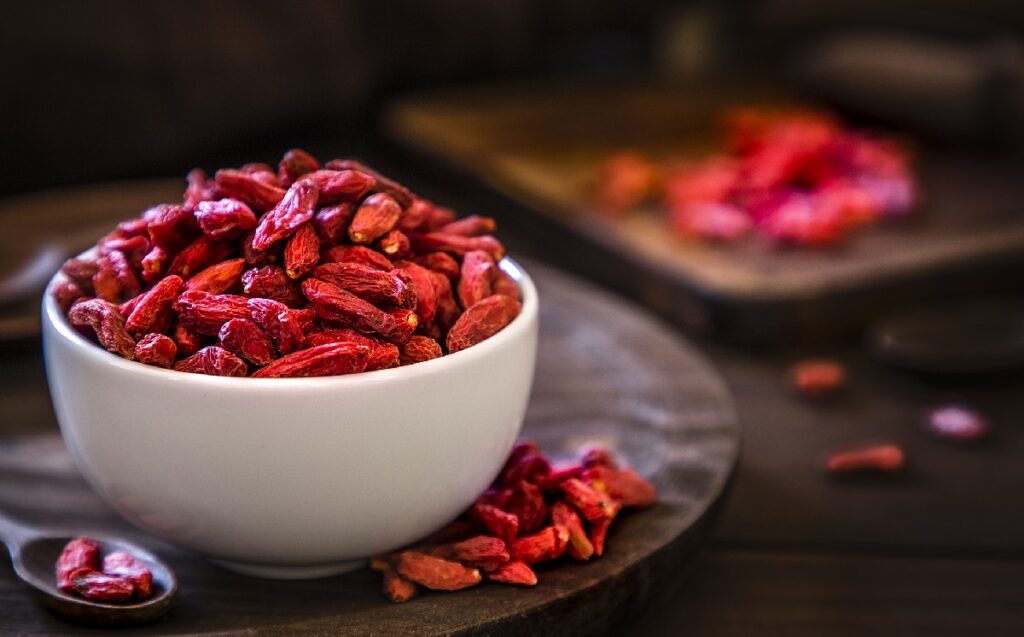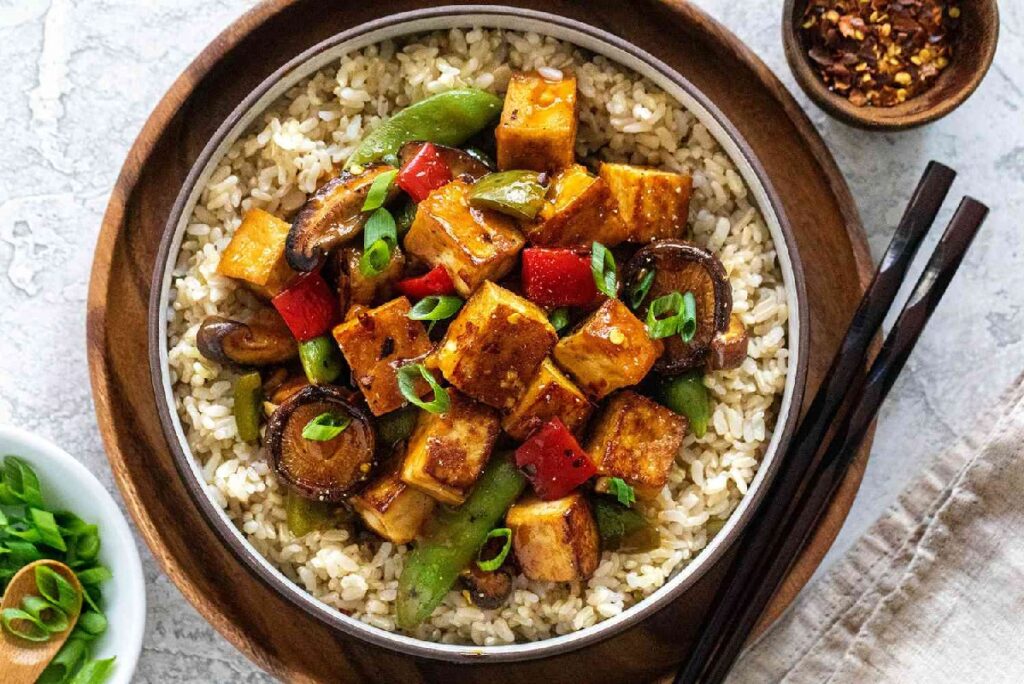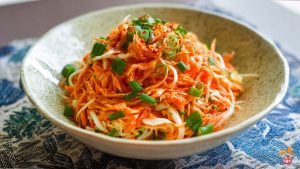Last updated on January 1st, 2024 at 08:35 am
Contrary to popular belief There is no Yat Chinese food. What is even more surprising is the word Yat is not Chinese, it is Cantonese. Which means one, often used in one serving of food. If you are wondering what is the difference between Chinese and Cantonese.
From ancient roots to modern kitchens, we’ll explore the distinct history of Chinese and Cantonese cuisine. Uncover the health-boosting secrets of everyday ingredients, then conquer your cravings with 3 easy Yat Chinese Food recipes!
Knowing The Difference
While “Chinese” encompasses a vast family of languages and cultures, Cantonese stands out as a prominent member with its unique characteristics. Here’s a breakdown of the key differences:

Language
Family
Both belong to the Sinitic branch of the Sino-Tibetan language family, but they diverged centuries ago.
Mutual Intelligibility
Mandarin (the “standard” Chinese) and Cantonese are not mutually intelligible. Imagine Spanish and Portuguese – similar roots but not readily understandable to each other.
Tones
Mandarin has four tones, while Cantonese has six (some argue even nine!). These tonal variations change the meaning of words entirely.
Writing System
Both use Chinese characters, but Cantonese often favors traditional characters, whereas Mandarin primarily uses simplified ones.
Geography and Culture
Distribution
Mandarin is the official language of mainland China, Taiwan, and Singapore. Cantonese is dominant in Hong Kong and Macau and is spoken by many overseas Chinese communities.
Cuisine
Cantonese cuisine emphasizes light flavors, fresh seafood, and dim sum – small, steamed dishes perfect for sharing. Mandarin cuisine can vary greatly across regions but often features bolder flavors and hearty dishes.
Cultural Traditions
Cantonese culture has distinct traditions in music, opera, and martial arts. These traditions blend with mainland Chinese traditions but showcase unique regional nuances.
Status and Development:
Mandarin
As the official language of the most populous nation, Mandarin enjoys wider adoption and resources for development.
Cantonese
Although not officially recognized in mainland China, Cantonese thrives in Hong Kong and among overseas communities. It possesses a rich literary and artistic heritage.
Remember, these are just broad generalizations. Both Chinese and Cantonese exhibit amazing diversity within themselves. It’s fascinating to explore how these languages and cultures intertwine while preserving their own distinct identities. I hope this helps!
10 Yat-ful Medicinal Marvels: Unlocking the Healing Herbs of Chinese Cuisine
Yat Chinese food? More like a treasure trove of wellness! Beyond the delectable flavors and mouthwatering aromas, countless ingredients in Chinese cuisine pack a powerful punch of medicinal benefits. Whether readily available in your local supermarket or tucked away in specialty shops, these yat-mazing ingredients can become your everyday allies for a healthy glow.
Ginger
This fiery root, a staple in yat Chinese food like stir-fries and soups, is a champion of gut health. It soothes nausea, aids digestion, and boasts anti-inflammatory properties. So next time you reach for ginger in your stir-fry, remember, it’s not just adding zing, it’s zesting up your well-being!
Goji Berries

These tiny red wonders, often enjoyed in yat Chinese food like soups and teas, are nature’s antioxidant superstars. They’re loaded with vitamin C, protecting your cells from free radicals and potentially keeping you younger for longer. So, skip the processed snacks and add a handful of goji berries to your yogurt – yat healthy snack, yat step closer to longevity!
Garlic
This pungent gem, a key ingredient in countless yat Chinese food, is more than just a flavor bomb. It boasts immune-boosting properties, helps lower blood pressure, and has potential benefits for fighting off colds and infections. So, don’t shy away from garlic in your dish – it’s not just adding garlicky goodness, it’s guarding your health, one pungent bite at a time!
Green Tea
This beloved beverage, enjoyed both hot and cold in yat Chinese food, is a well-respected health hero. Packed with antioxidants, it can help lower cholesterol, improve brain function, and even protect against certain cancers. So, ditch the sugary drinks and brew yourself a steaming cup of green tea – yat sip of serenity, yat dose of health!
Shiitake Mushrooms
These meaty delights, often featured in yat Chinese food like stir-fries and broths, are a good source of vitamin D and B vitamins. They also have immune-boosting properties and might even play a role in preventing cancer. So, swap your usual protein for shiitake mushrooms in your next stir-fry for a flavor upgrade, and health upgrade!
Tofu
This versatile soy-based wonder, a star in countless vegetarian yat Chinese food, is a high-protein, low-fat powerhouse. It’s rich in calcium and isoflavones, which might offer protection against heart disease and some cancers. So, don’t hesitate to indulge in your tofu scramble – it’s not just filling your belly, it’s fulfilling your body’s need for protein and potential protection!
Black Sesame Seeds
These tiny black marvels, often used in yat Chinese food, desserts and soups, are rich in calcium, and good for bone health. They also boast anti-inflammatory properties and might even aid in lowering cholesterol. So, sprinkle some black sesame seeds on your salad or yogurt – for garnishing.
Honey
This golden nectar, used in yat Chinese food, teas and marinades, is a natural sweetener with potential health benefits. It acts as an antioxidant, aids in wound healing, and even soothes coughs and sore throats. So, drizzle some honey onto your steamed dumplings or into your drinks– yat touch of sweetness.
Turmeric
This vibrant orange spice, often found in yat Chinese food, curries and soups, is a potent anti-inflammatory agent. It might help ease joint pain, improve brain function, and even have potential benefits in fighting cancer. So, don’t hesitate to add a pinch of turmeric to your next curry – a dash of color.
Watercress
This peppery green sometimes enjoyed in yat Chinese food, stir-fries and salads, is packed with vitamins and minerals. It’s a good source of vitamin C, boosting your immune system, and has potential benefits for eye health and cancer prevention.
Remember, incorporating these medicinal marvels into your everyday meals is not just about taste; it’s about treating your body like a temple, yat delicious bite at a time!
Conquer Your Yat Chinese Food Cravings – 3 Dishes
Forget takeout menus and dive into the world of healthy, homemade yat Chinese food! These 3 easy recipes are perfect for the average kitchen, bursting with flavor and packing a punch of nutritional goodness. So, grab your wok, gather some basic ingredients, and get ready to whip up something amazing!
1. Spicy Tofu Stir Fry
This Spicy Tofu Stir-Fry is packed with bold flavors and hidden health benefits. Tofu takes center stage, soaking up a symphony of aromatics, spice, and veggies, all delivered in a lightning-fast stir-fry dance. Let’s get wok-ing!

| Category | Ingredient | Amount | Health Benefits |
| Tofu | Extra-firm tofu, drained and pressed | 14 oz | Plant-based protein, calcium, iron |
| Cornstarch | 1 tbsp | Helps tofu crisp up | |
| Soy sauce | 1/2 tsp | Flavor, umami | |
| Ginger powder | 1/4 tsp | Warms the dish, aids digestion | |
| Black pepper | Pinch | Enhances other flavors | |
| Stir-Fry | Avocado oil | 1 tbsp | Healthy fat, high smoke point |
| Red bell pepper, thinly sliced | 1 | Vitamin C, antioxidants | |
| Green bell pepper, thinly sliced | 1 | Vitamin C, antioxidants | |
| Red onion, thinly sliced | 1 | Adds sweetness, anti-inflammatory | |
| Garlic cloves, minced | 2 | Flavor, immune support | |
| Fresh ginger, grated | 1 inch | Anti-inflammatory, aids digestion | |
| Red chili pepper, thinly sliced | 1 (adjust for heat) | Boosts metabolism, pain relief | |
| Broccoli florets | 1/2 cup | Vitamin K, fiber | |
| Snow peas | 1/2 cup | Vitamins A & C, protein | |
| Soy sauce | 1/4 cup | Flavor, umami | |
| Rice vinegar | 1 tbsp | Brightens flavors, balances spices | |
| Honey | 1 tsp | Sweetness, balances heat | |
| Sriracha | 1/2 tsp (optional) | Extra heat, capsaicin benefits | |
| Fresh cilantro, chopped | 1/4 cup | Adds freshness, vitamin A | |
| Serving | Cooked rice or noodles | Your preference | Whole grains or fiber |
Instructions
- Prep the Tofu: Cut tofu into bite-sized cubes, toss with cornstarch, soy sauce, ginger powder, and pepper. Heat oil in a wok or large skillet over high heat. Fry tofu until golden brown on all sides, and set aside.
- Sauté the Veggies: Add oil, bell peppers, and onion to the pan. Stir-fry for 2-3 minutes until softened. Add garlic, ginger, and chili pepper (adjust the amount for desired heat). Cook for another minute until fragrant.
- Simmer and Stir: Return tofu to the pan along with broccoli and snow peas. Pour in soy sauce, rice vinegar, honey, and sriracha (if using). Simmer for 2-3 minutes until sauce thickens slightly and vegetables are crisp-tender.
- Finishing Touches: Garnish with fresh cilantro and serve over cooked rice or noodles.
2. Kung Pao Chicken
Craving a taste of fiery Sichuan? Look no further than this Kung Pao Chicken! This simplified version delivers all the punchy flavors and vibrant textures of the classic, minus the lengthy ingredient list and complicated techniques. Get ready to stir-fry your way to a satisfying and healthy dinner in under 30 minutes!
| Category | Ingredient | Amount | Health Benefits |
| Chicken | Boneless, skinless chicken thighs | 1 lb | Lean protein, iron, B vitamins |
| Cornstarch | 2 tbsp | Helps chicken crisp up | |
| Soy sauce | 1 tbsp | Flavor, umami | |
| Honey | 1 tsp | Sweetness, balances heat | |
| Rice vinegar | 1/2 tsp | Brightens flavors, acidity | |
| Sesame oil | 1 tsp | Nutty flavor, healthy fats | |
| Black pepper | Pinch | Enhances other flavors | |
| Sichuan Sauce | Soy sauce | 2 tbsp | Flavor, umami |
| Chicken broth | 1/2 cup | Adds depth, sodium-conscious option | |
| Rice vinegar | 1 tbsp | Brightens flavors, acidity | |
| Brown sugar | 2 tbsp | Sweetness, caramelization | |
| Sriracha | 1 tbsp (adjust for heat) | Spice, capsaicin benefits | |
| Cornstarch | 1 tbsp | Thickens sauce | |
| Water | 2 tbsp | Helps dissolve cornstarch | |
| Stir-Fry | Peanut oil | 2 tbsp | Healthy fats, high smoke point |
| Garlic cloves, minced | 2 | Flavor, immune support | |
| Ginger, grated | 1 inch | Anti-inflammatory, aids digestion | |
| Red bell pepper, thinly sliced | 1 | Vitamin C, antioxidants | |
| Green bell pepper, thinly sliced | 1 | Vitamin C, antioxidants | |
| Peanuts, roasted and salted | 1/2 cup | Healthy fats, protein, adds texture | |
| Scallions, chopped | 3 tbsp | Freshness, vitamin A |
Instructions
- Prep the Chicken: Cut chicken into bite-sized pieces. Toss with cornstarch, soy sauce, honey, rice vinegar, sesame oil, and pepper. Set aside.
- Mix the Sichuan Sauce: Whisk together soy sauce, chicken broth, vinegar, brown sugar, sriracha, cornstarch, and water in a bowl. Set aside.
- Heat the Oil: Heat peanut oil in a wok or large skillet over high heat. Add garlic and ginger, and stir-fry for 30 seconds until fragrant.
- Stir-fry the Chicken: Add chicken and cook until browned and cooked through (about 5 minutes). Remove from pan and set aside.
- Sauté the Bell Peppers: Add bell peppers and stir-fry for 1-2 minutes until softened.
- Simmer the Sauce: Pour in the Sichuan sauce and bring to a simmer. Return chicken to the pan and toss to coat.
- Finish and Serve: Garnish with peanuts and scallions. Serve immediately over rice or noodles of your choice.
2. Citrus Sunrise Green Tea
This simple and refreshing green tea recipe is the perfect way to jumpstart your day with a burst of citrus flavor and a healthy dose of Vitamin C. It’s light, invigorating, and packed with antioxidants, making it a great choice for a morning beverage or an afternoon pick-me-up.
| Ingredient | Amount | Health Benefits |
| Green Tea | 1 cup hot water (70-80°C) | Rich in antioxidants, boosts metabolism, improves brain function, lowers risk of heart disease |
| 1 green tea bag or 1 teaspoon loose leaf | ||
| Citrus | 1/2 lemon or orange, freshly squeezed | High in Vitamin C, strengthens the immune system, protects against oxidative stress, aids digestion |
| Optional | ||
| Honey or agave nectar | To taste | |
| Fresh ginger slice | 1 (optional) |
Instructions
- Steep the green tea bag or tea leaves in hot water for 2-3 minutes.
- Remove the tea bag or strain the leaves.
- Add the freshly squeezed lemon or orange juice to the tea.
- Taste and adjust the sweetness, adding honey or agave nectar if desired.
- Serve immediately and enjoy!
FAQs
Q. What are the main styles of Chinese cuisine?
The main styles are Cantonese, Sichuan, Hunan, Jiangsu, and Shandong cuisine. Each has its flavors, ingredients, and cooking techniques.
Q. What is Dim Sum?
Dim Sum refers to small plates or snacks of dumplings, buns, and other bites served in steamer baskets or on small plates. It originated in tea houses in China.
Q. What is Kung Pao Chicken?
Kung Pao Chicken features chicken, peanuts, vegetables, and chilies in a sweet, salty, and spicy sauce. It originated in the Sichuan province of China.
Q. Are chopsticks the main eating utensils used in Chinese cuisine?
Yes, chopsticks are the primary utensils used to eat Chinese food. They originated in China over 3,000 years ago.
Q. What are popular Chinese desserts and snacks?
Popular sweets include mooncakes, tangyuan (glutinous rice balls), douhua (soft tofu), mango pomelo sago, and egg tarts inspired by Hong Kong-style bakeries.

At Bridge House Tavern, we’re more than a team of food enthusiasts; we’re a culinary journey waiting to be savored. Our five-member crew is on a relentless quest to explore, create, and share the wonders of the gastronomic world.



